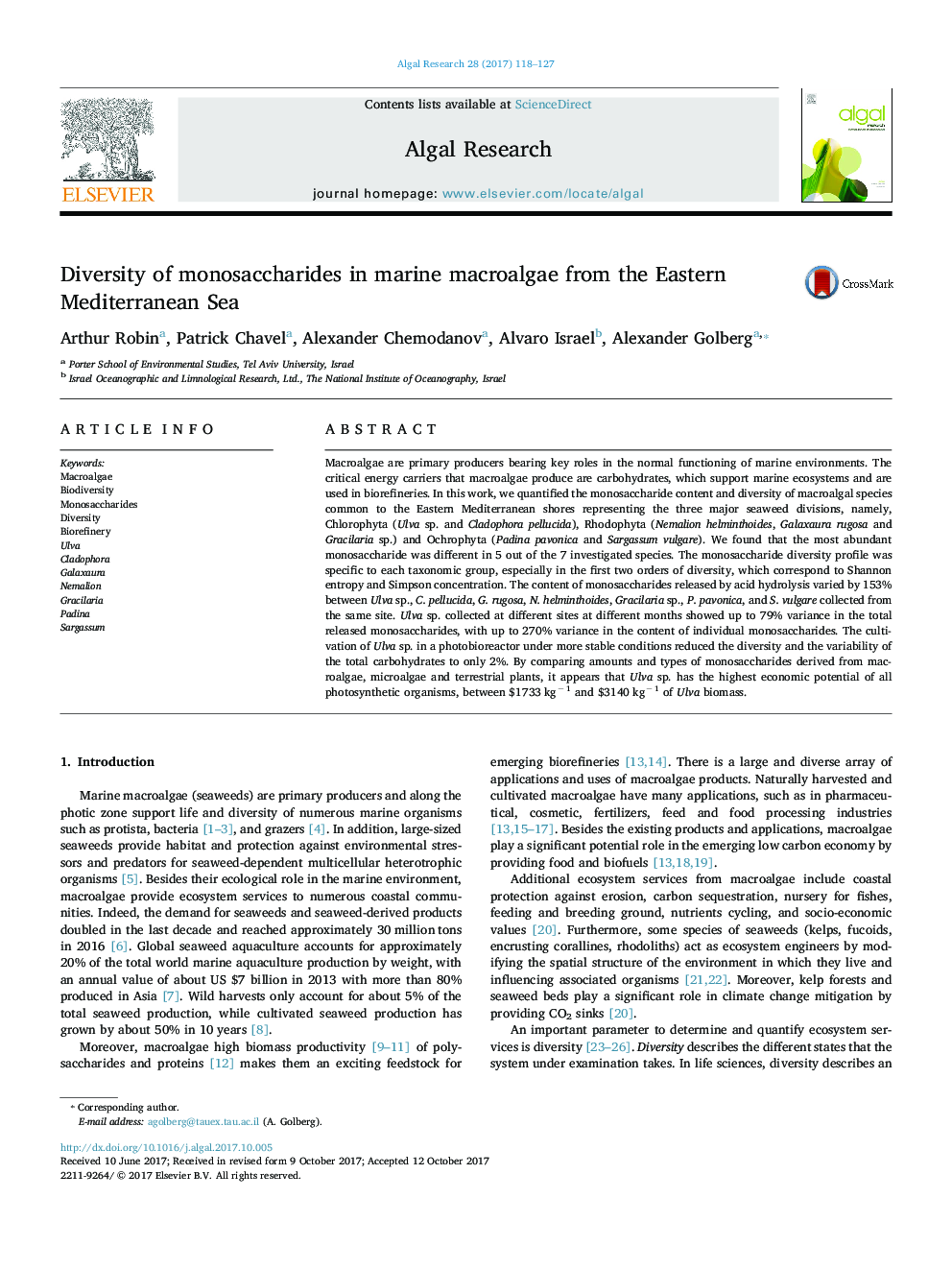| Article ID | Journal | Published Year | Pages | File Type |
|---|---|---|---|---|
| 8086329 | Algal Research | 2017 | 10 Pages |
Abstract
Macroalgae are primary producers bearing key roles in the normal functioning of marine environments. The critical energy carriers that macroalgae produce are carbohydrates, which support marine ecosystems and are used in biorefineries. In this work, we quantified the monosaccharide content and diversity of macroalgal species common to the Eastern Mediterranean shores representing the three major seaweed divisions, namely, Chlorophyta (Ulva sp. and Cladophora pellucida), Rhodophyta (Nemalion helminthoides, Galaxaura rugosa and Gracilaria sp.) and Ochrophyta (Padina pavonica and Sargassum vulgare). We found that the most abundant monosaccharide was different in 5 out of the 7 investigated species. The monosaccharide diversity profile was specific to each taxonomic group, especially in the first two orders of diversity, which correspond to Shannon entropy and Simpson concentration. The content of monosaccharides released by acid hydrolysis varied by 153% between Ulva sp., C. pellucida, G. rugosa, N. helminthoides, Gracilaria sp., P. pavonica, and S. vulgare collected from the same site. Ulva sp. collected at different sites at different months showed up to 79% variance in the total released monosaccharides, with up to 270% variance in the content of individual monosaccharides. The cultivation of Ulva sp. in a photobioreactor under more stable conditions reduced the diversity and the variability of the total carbohydrates to only 2%. By comparing amounts and types of monosaccharides derived from macroalgae, microalgae and terrestrial plants, it appears that Ulva sp. has the highest economic potential of all photosynthetic organisms, between $1733 kgâ 1 and $3140 kgâ 1 of Ulva biomass.
Related Topics
Physical Sciences and Engineering
Energy
Renewable Energy, Sustainability and the Environment
Authors
Arthur Robin, Patrick Chavel, Alexander Chemodanov, Alvaro Israel, Alexander Golberg,
